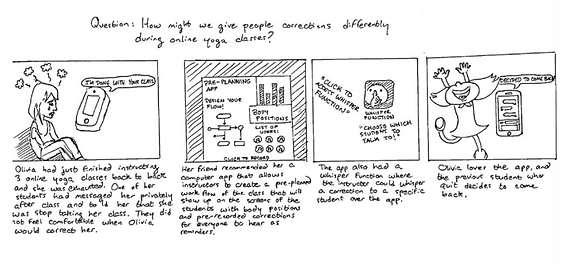
Virtual Yoga Class App
OVERVIEW
Many yoga classes have been canceled due to COVID. People who do yoga classes regularly noted that the experience doing yoga alone was not the same without their yoga friends or an instructor to help them.
To solve this problem our team designed an app where people can come together and do yoga. Users have the opportunity to search yoga classes by their preferences and take classed with friends. Each class is assigned real life-time yoga instructors who are there to help and lead when needed.
ROLE
UX Researcher
Prototyping & Testing
UI Designer
DURATION
2 weeks
Understanding the Problem
COVID-19 has impacted our lives in many ways. The cancellation of activities has forced many people to stop their daily activities. My team focused specifically on the problem of the cancellation of Yoga classes. To find out more about this issue we interviewed multiple people who were either active in Yoga or were interested in taking a Yoga class. Through our research, many of our interviewees noted that they use Yoga as an outlet for stress relief, interacting with others, or for its health benefits. The cancellation of these classes has caused our interviewees to not recieve any of these benefits. Interviewees stated that the experience is not the same when Yoga is done by themselves at home and wished they could recreate the same type of Yoga environment they would get from their in-person classes.
Gathering Insights
First, we collected both primary and secondary information about Yoga, its benefits, and the demographics of its main users. We came together and created an affinity diagram that contains all of the insights and findings we found through our research.

After deliberating about our different storyboards and different pain points to focus on, we decided that the ‘whisper’ function (top storyboard) with a voice/sound component (bottom storyboard) would be most useful in giving students corrections differently, while still allowing users who are not technologically savvy to participate in an online yoga class.


Next, we created wireframes and lo-fi prototypes which reflect our decision to create a zoom extension that has a voice-activated feature that would create a private voice channel between the student and teacher. Another feature that we highlighted in our Lo-Fi was a “Queue” function for the instructor’s view so that they could see who had requested help. We created a schedule function that would serve as an overview for a teacher or student’s class for the month/ week/ day. We debated whether or not we would have an instructor correcting the recorded videos, but decided that the cost would be too high to have instructors around the clock.


Our mid-fi prototype represents a more refined version of we thought were the most important screens in our lo-fi. We chose to leave out the display for the recorded class because it is so similar to our live class, with the only differences being the ability to pause and the lack of a voice feature. We added in the necessary icons for each page and determined a general layout that we would improve upon in our hi-fi.

Summary of Insights
1.) People are uneducated about yoga and its benefits
2.) Older people are not as tech savvy and is hard for them to access online yoga classes
3.) Interaction level with other people in Yoga classes varies
4.) Yoga class instructor determines entire "how" of class
Solution
In our hi-fi prototype, we focused on improving the general design from our mid-fi and improving the flow from screen to screen
We added another Find A Class screen to show the user what the search results would look like in terms of adding a class.
We also added a contacts screen to separate friends (adding and seeing contact information) from the leaderboard feature.
We added a help icon to every page, and offered a pause icon for the freestyle.
